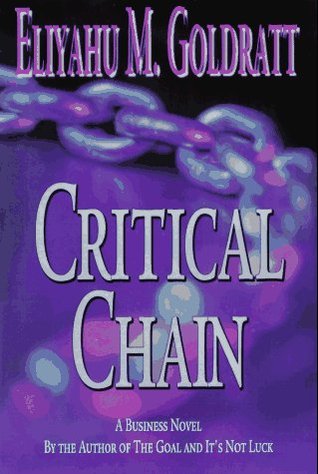More on this book
Community
Kindle Notes & Highlights
"One: Corporate forced an unrealistic schedule to start with. Two: It was dictated that we choose the cheaper vendors, even though it was known that they are less reliable. Three: In spite of repeated warnings, efforts to recruit and train plant personnel and workers started too late."
"It especially makes sense because in most environments there is little positive incentive, if any, to finish ahead of time, but there are plenty of explanations required when we are late.
"The critical path," I remind the class, "determines the time it will take to finish the project. Any delay on the critical path will delay the completion of the project. That's why the project manager must focus
"So where do we stand? In order to control cost, managers must manage according to the ‘cost world,' while in order to protect throughput they must manage according to the ‘throughput world.' Can they manage according to both at the same time?
At the beginning of the month these companies are managed according to the cost world, at the end of the month according to the throughput world.
This is a statistical rule. But those who teach statistics know that the twenty-eighty rule applies only to systems composed of independent variables; it applies only to the cost world where each link is managed individually. "What about the throughput world? Since
IDENTIFY the system's constraint(s).
One is to simply add more capacity, by
hiring more people or buying more machines. But there is another way. To squeeze the maximum from the capacity we already have. Make sense?" When he gets agreement, he continues, "Since TOC accepts ‘controlling cost' as an absolute necessary condition, no wonder that it elects the second step to be: Decide how to EXPLOIT the system's constraint(s).
SUBORDINATE everything else to the above decision. If we can squeeze only ten units from the bottleneck there is
fourth step: ELEVATE the systems' constraint(s).
"TOC adopts the definition accepted in the accurate sciences. A problem is not precisely defined until it can be presented as a conflict between two necessary conditions."
There was a real, true consensus that the core problem, the constraint of the company, was the fact that their prime operational measurement was tons-per-hour.
Now you understand much better why TOC claims that currently the core problem of our organizations, the constraint, is the fact that so many of our management systems are based on the belief that the assumptions of the cost world are valid.
Real-life systems have one, maximum two, constraints.
currentreality-tree.
The thinking process of TOC, called the evaporating
cloud,
"the boss of this project asks each person for their own estimates, adds them up and then adds his own safety factor on top."
draw the diagrams, so it's easier for them to figure out the answer.
"We found three mechanisms to put safety in. Now it seems that we also found three mechanisms to waste that safety. One we called the student syndrome, there is no rush so start at the last minute. The second is multi-tasking. The third involves the dependencies between steps; these dependencies cause delays to accumulate and advances to be wasted.
"Tie the first soldier with a rope to the slowest soldier, to the bottleneck. That's all.
One. Persuading the various resources to cut their lead time estimates; Two. Eliminating milestones or, in other words, eliminating completion due dates for individual steps, and Three. Frequent reporting of expected completion times."
path dependent and sections that are resource dependent."
Payback period is trying to give the answer in terms of time—two-years, three-years payback. Net-present-value is trying to give the answer in terms of money, of dollars. I'm afraid that the answer can only be expressed in terms of time and money, together, not


